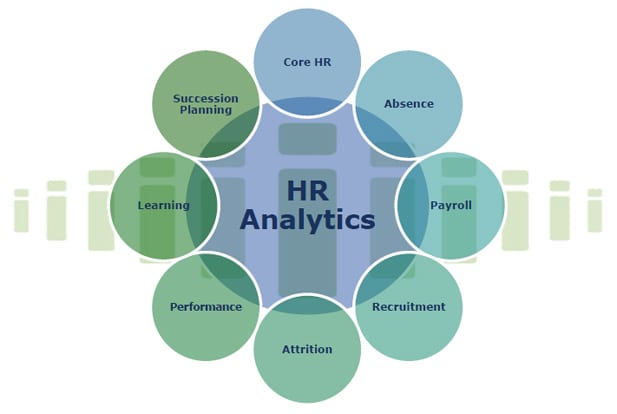
In this amazing package, there are 20 Premium HR Management Slides and 15 Ultimate HR Tools. All Premium HR Slides slides are designed in powerpoint files (ppt) so that you can edit or modify and immediately use for your own learning process. You can save your valuable time by using our ready-made presentation materials.
All presentation slides are also accompanied by PRESENTER NOTES. Designed in ebook format, these presenter notes will help you explain your presentation slides more powerfully. You will get 20 presenter notes/ebooks for all of the 20 presentation topics.

The following are the titles of the 20 Premium HR Management Slides.
1. Competency-based HR Management.
2. HR Scorecard.
3. Principles of HR Management.
4. Measuring ROI of Training.
5. Change Management.
6. Diagnosing Organizational Effectiveness.
7. Good to Great.
8. Coaching for Optimal Performance.
9. Balanced Scorecard.
10. Career Management.
11. Communication Skills.
12. Emotional Intelligence.
13. Developing Leadership Skills.
14. Presentation Skills for HR Managers.
15. Creative Thinking Skills for HR Managers.
16. Digital HR Strategy
17. High Impact Recruitment Strategy
18. How to Attract and Retain Top Talents
19. People Analytics
20. Developing a World Class HR Strategy
Our HR Presentation Series have been enjoyed by many people around the world. Here is just a small selection of their comments :
HR concepts and tools are very well presented in a concise way. Manoj Kumar, HR Officer.
Nice and awesome presentation. Tapin Sood, HR Executive.
What a good presentation.. this is what I needed. Azizah Azura, HR Specialist.
Very good content, clean and very useful presentation. Elizabeth Oropeza, HR Consultant.
When you download all of those brilliant HR Slides, you will get 15 ULTIMATE HR TOOLS for HR MANAGERS.

These Ultimate HR Tools contain 15 HR Tools and Templates that are really powerful and practical, and you can use them immediately in your business. The following are the titles of these 15 HR tools and templates :
1. A Complete Catalog of KPIs for All HR Functions.
This catalog provides an extensive list of key performance indicators (KPI) for all HR functions. You can immediately utilize this valuable tool as part of your performance management process.
2. A Set of Competency-based Interview Questions.
An extensive list of competency-based interview questions to screen the right talents.
3. HR Audit Questionnaire.
Key questions protocol to conduct HR Audit. This tool will be instrumental for improving the performance of your HR team.
4. Employee Satisfaction Survey Questionnaire.
This valuable tool can immediately be used to discover your employee satisfaction level.
5. Competency Development Template and Guidebook.
Equipped with templates and protocols, this tool also displays excellent examples of competency matrix and competency model.
6. Powerful Template – Table of KPIs for HR Managers.
This excellent template displays relevant KPI for HR Manager, weight of each KPI, and formula to calculate KPI score. This template can immediately be used as “Performance Contract Agreement” for HR Manager.
7. Tool to Evaluate HR Effectiveness.
A set of survey questionnaire to evaluate the effectiveness of HR service delivery in the eyes of its customers (employees).
8. Employee Development Plan Guidebook.
This EDP guidebook provides an extensive sample of development activities to enhance your competency level. This valuable tool can immediately be used for your EDP process.
9. Sample of HR Plan and Program.
This template presents a comprehensive HR program in real terms, the expected results from each program, as well as a timeline for its implementation.
10. Tools and Templates for Implementing a Career Management System.
This tool contains templates and step-by-step guides for developing career systems in your company. This tool comes with ready-to-use forms and templates, so it can be instantly implemented and can be used to construct a better career system.
11. Tools and Templates for Implementing a Talent Management System.
This tool contains real-world examples of talent management system policy guidelines. This tool also includes forms and templates for creating a Talent Management System, as well as detailed instructions for completing it.
12. HR Strategy Map Tools and Templates.
This tool contains forms and templates for developing a HR Strategy Map. You will be provided a guideline for filling it out as well as an example of a completed HR Strategy Map form to use as a reference.
13. Tools and Templates for Measuring ROI of Training.
This tool includes templates and forms for measuring the effectiveness of training as well as the Return on Investment of Training (ROI of training). Each template/form comes with a step-by-step guideline for filling it out, as well as examples of completed forms.
14. Tools and Templates for Conducting Workload Analysis.
This tool contains guidelines, forms, and templates for conducting workload analysis. Real-world examples of workload analysis results for various departments/sections are also included in this powerful tool, along with information on how to determine the optimal number of employees in various departments within the company.
15. HR Manuals and HR Standard Operating Procedures
This is a really powerful HR tool. It includes a comprehensive collection of HR Manuals or HR Standard Operating Procedures (SOP). Each manual/SOP comes with pre-made flowcharts, templates and forms.
These HR Manuals comprise of 27 SOPs and Flowcharts – covering all HR operations, including manpower planning, recruiting, and training processes, as well as employee performance and promotion procedures. These HR Manuals/SOPs will be extremely beneficial to your HR team.
Another Excellent BONUS. When you download all of those brilliant HR slides and Ultimate HR Tools, you also will get 5 Exclusive Reports on HR Strategy Best Practices. The following are the titles of this best practices report :

1. Human Capital Strategy at Google.
2. Human Capital Strategy at Procter and Gamble.
3. Human Capital Strategy at Microsoft.
4. Talent Management Strategy at General Electric.
5. Talent Management Strategy at Coca Cola.
These special reports provide a comprehensive review on how top companies develop and implement their best HR strategies.
You will also receive 11 excellent PowerPoint presentation slides about Personal Development as part of the bonus. Its contents are the essence of several best-selling self-development books. You may use this material for knowledge sharing sessions in your office because it is presented in a powerpoint slide format that is rich in visuals and has a stunning design.

The following are the titles of 11 personal development topics offered in the form of powerpoint slides :
1. 4 Discipline of Execution
2. 7 Habits of Highly Effective People
3. Atomic Habits
4. Getting Things Done
5. GRIT – The Power of Passion and Perseverance
6. Measure What Matters
7. Growth Mindset
8. Now Discover Your Strengths
9. Start with WHY
10. TED Talk
11. Thinking Fast and Slow
Extra bonus : When you order these excellent HR Premium Slides Series and Ultimate HR Tools, you also will get 10 brilliant slides on Marketing and Business Strategy.
You can share these valuable slides with your marketing and business team, or you can use these slides to train your marketing people. Yes, because to become a smart strategic business partner, HR people should also understand the language of business.
****
To summarize, the materials included in Premium HR Slides and Ultimate HR Tools package are :
20 Excellent HR Slide Series (+20 Presenter Notes).
15 Ultimate HR Tools.
5 Exclusive Reports on HR Strategy Best Practices.
11 Amazing PPT Slides on Personal Development.
10 Excellent Marketing and Business Strategy Slides Series
WOW, WOW …… All of the materials are just amazing.
What is the cost of the investment? And how do I place my order? This excellent HR Premium Slides and Ultimate HR Tools suite has piqued my curiosity.
Each of the tools listed above has HIGH VALUE. If you and your coworkers develop it from the beginning, it may take months (just multiply it by the salaries of the employees who make it for a month).
Meanwhile, if you use the services of an HR consultant, the cost of creating the different HR tools and slides above might surpass USD 10,000 – in fact, this price is commonly charged by HR management consultants to their clients.
The good news is, you can get the powerful Premium HR Slides and Ultimate HR Tools for only :
USD 2500
USD 1500
USD 95
Yes, you read it correctly: the Premium HR Slides and Ultimate HR Tools package is available for only USD 95.
The price is far less than the hundreds of dollars in staff training costs that are currently available.
However, if you invest that much money to buy these PREMIUM HR SLIDES and ULTIMATE HR TOOLS, you will receive remarkable value. Just have a look at the descriptions of these materials above. Everything is amazing and has a significant influence on the development of HR in your office.
Believe me : purchasing these Premium HR Slides and Ultimate HR Tools will be one of the most valuable investments in improving the quality of HR in your company.
You can instantly download all HR Slides and HR tools files after payment has been completed.
Yes, you can immediately utilize those Ultimate HR Tools to enhance your employee performance. You can also use those excellent HR Slides Series and HR Strategy Exclusive Reports to sharpen your HR knowledge.
We believe that the intangible value of this investment will be very tremendous. Expanding your HR knowledge and expertise is a must when you aspire to enhance your career movement.
All of these powerful powerpoint slides and HR tools are available for only USD 95.
20 Excellent HR Slide Series (+20 Presenter Notes).
15 Ultimate HR Tools.
5 Exclusive Reports on HR Strategy Best Practices.
11 Amazing PPT Slides on Personal Development.
10 Excellent Marketing and Business Strategy Slides Series
Sincerely yours,
Yodhia Antariksa
Master of HR Management
Texas A&M University, USA
Chief Knowledge Officer – Premium HR Slides Series.
Please click HERE to contact me


